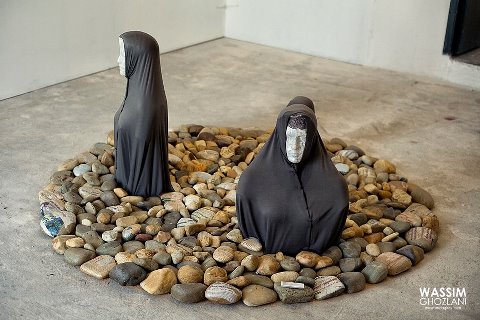“Drawing is prayer,” Delacroix famously said. He could have added that it’s play as well. And thinking.
 |
|
The Giaour on Horseback, by Eugène Delacroix, c. 1824–26, by Eugène Delacroix, pen and iron gall ink with wash over graphite, courtesy Metropolitan Museum of Art
|
Shelving books this week, I came across a small volume of drawings by Eugène Delacroix. I flipped it open and the better part of an hour was lost.
Delacroix was a Romantic painter. He is considered the last of the Old Masters and the link between Romanticism and the Impressionists. He rejected the more-structured romanticism of Géricaultand the classical coolness of Ingresin favor of frenzied brushwork and explosions of color. But there is nothing modern in his painting; it is far too topical for us to dive right in. Delacroix was a man of his times—perhaps the illegitimate son of the great diplomat Tallyrand—and it’s hard for us to skim past the allusions to Shakespeare and Greek myth and find the passion within. But it’s there, a kind of fervor we usually associate with Spanish visionaries.
 |
|
Louis of Orléans Unveiling his Mistress, by Eugène Delacroix, c. 1825–26, courtesy Thyssen-Bornemisza Collection
|
Still, he’s a cool observer of the human condition. Consider his portrait of the 14th century Duke of Orléans, above. The historic figure was a young, debauched, power-hungry prince. Delacroix portrays him considering a young woman as if she were a side of beef. It’s both a well-realized portrait of female powerlessness and a devastating attack on the French nobility. Delacroix was both politically incisive and technically proficient, a combination that is largely lost today.
But it was his drawings I was interested in. Immediately before his death in 1863, he wrote a will ordering the contents of his studio to be sold. At the sale the following year, an amazing 9140 works were attributed to him: 853 paintings, 1525 pastels and watercolors, 6629 drawings, 109 lithographs, and over 60 sketch books. “Color always occupies me, but drawing preoccupies me,” he frequently said.
 |
|
Study for The Sultan of Morocco and His Entourage, by Eugène Delacroix, 1845, graphite, squared in white chalk, courtesy Metropolitan Museum of Art
|
Delacroix’s drawings and sketchbooks outline a classical artistic training and developing career. They include academic nude figure drawings, écorchés and compositional studies for his paintings and murals. They included drawings from life and nature, and the many, many drawings he created from his imagination.
 |
|
The Sultan of Morocco and his Entourage, by Eugène Delacroix, 1845, courtesy
Musée des Augustins de Toulouse. By this time, the French and Moroccans had been at war. |
They weren’t, by any means, all graphite pencil drawings. Many are in ink or wash and demonstrate a calligraphic assurance. Others are in watercolor. “Drawing is prayer,” Delacroix famously said. He could have added that it’s play as well. And thinking.
 |
|
He couldn’t leave the idea alone. Study for The Sultan of Morocco and His Entourage, by Eugène Delacroix, c. 1855–56, graphite, courtesy Metropolitan Museum of Art.
|
If you’re serious about painting, you ought to take him as an example and draw every day. Yes, it’s important to learn to lay down paint, but drawing is the foundation from which painting rises.




